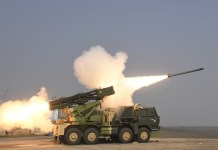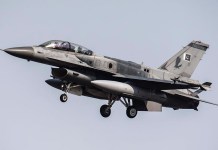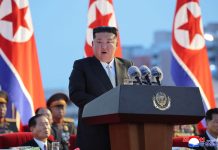China has been steadily making inroads in traditionally American defense markets. In the latest ‘yet to be officially confirmed’ sale, the Egyptian Air Force (EAF) has reportedly chosen its J-10C’ Vigorous Dragon’ instead of upgrading its fleet of aging F-16s.
Egypt could become the second country after Pakistan to place orders for the Chinese-built 4.5-generation fighter jet, which debuted in Africa during the recently concluded Egypt International Air Show.
Images of the Chinese-manufactured Y-20 transporter trailed by six J-10 jets flying over Egypt’s Giza pyramids in formation last week drew global attention, demonstrating distance and performance capabilities in the 10,000-kilometer flight from China to Egypt.
Reports indicate that the Egyptian Defense Ministry placed its first-ever order for Chinese fighters on August 19. This decision underscores Cairo’s ongoing efforts to deepen strategic and economic ties with Beijing following its recent entry into the Chinese-led BRICS bloc earlier this year.
The J-10C debuted in the Middle East with an appearance at the Dubai Air Show in November 2023. The PLAAF J-10C fighter jets participated in the 18th edition of the Dubai Air Show, which was hosted in the UAE. It was the acrobatic team’s first visit to Dubai since it switched from flying the J-10A to the new J-10C.
At the time, the J-10C team performed four flight performances and showcased three different programs consisting of at least 20 maneuvers. The performance at Riyadh painted the sky in the colors of Saudi Arabia’s national flag.
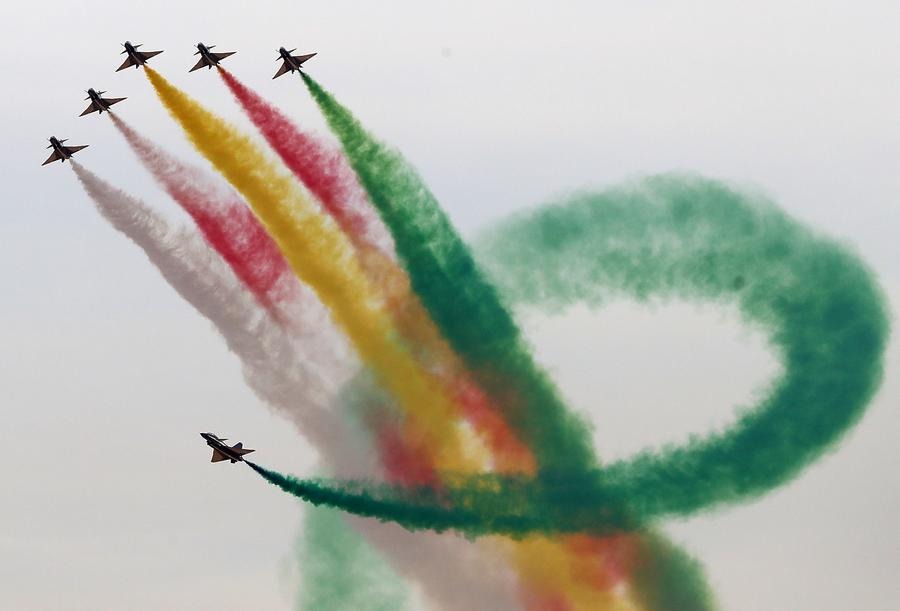
The J-10C is often compared to upgraded variants of the American F-16 Fighting Falcon. Like the F-16, the J-10 boasts a highly agile, aerodynamically unstable airframe stabilized by a computer in its fly-by-wire flight control system.
Its capabilities include beyond-visual-range engagement, precision air-to-ground strike, digital glass cockpit instruments, in-flight refueling, and electronic warfare.
It is being speculated that Egypt found a better bargain by purchasing the Chinese fighter jet rather than investing in upgrading its fleet of F-16s.
The other reason that would have tilted the balance in favor of the Chinese J-10C is its troubled ties with the US. For years, Egypt’s attempts to modernize its F-16s fleet with advanced weapons have hit political hurdles due to its intricate relationship with Washington.
US arms sales are often contingent on a country’s political regime and human rights record. In 2013, after the military removal of President Mohamed Morsi, the US withheld military aid to Egypt, stalling the essential upgrades of the aging F-16s.
US control over the spare parts and strict operational restrictions on the aircraft impede Egypt’s air power. Conversely, Chinese military supplies do not hinge on such conditions.
Egypt is turning to China as a potential source of weapons and military platforms after being dependent on Western countries like the US and France. It has purchased fighter jets from Russia; however, as Moscow remains embroiled in a war with Ukraine, it can no longer export military hardware.
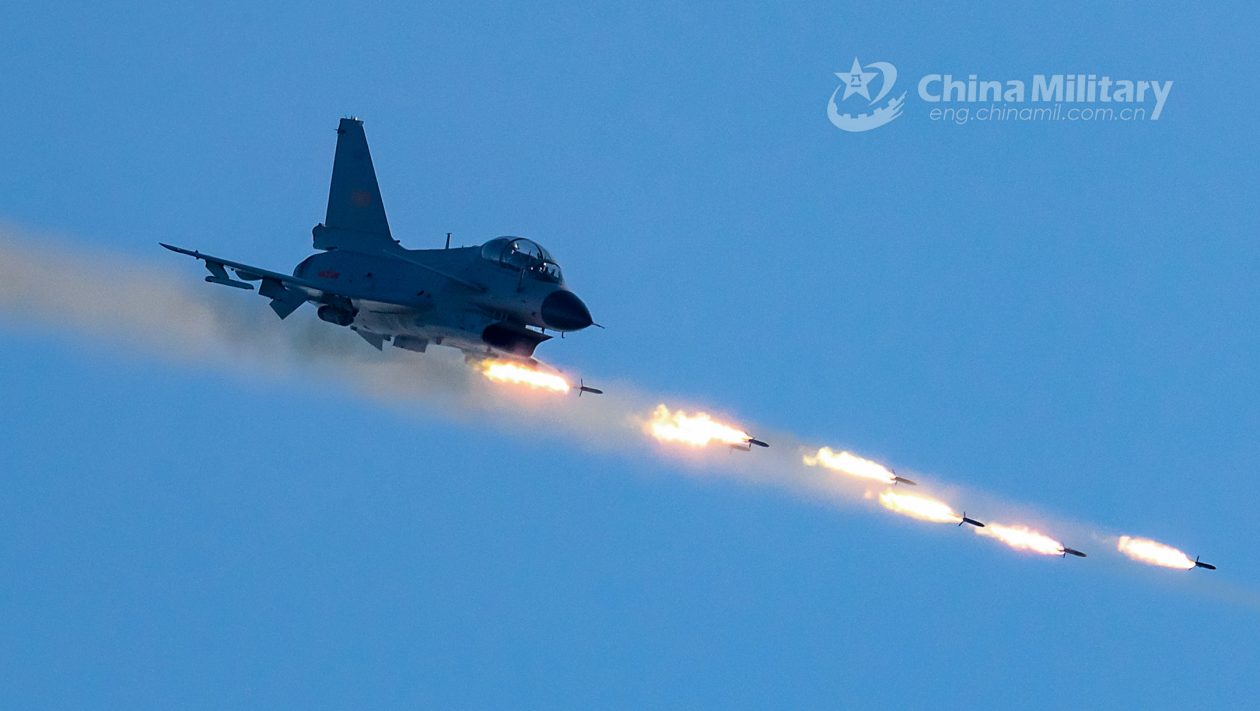
Before the Russian invasion of Ukraine, media reports indicated that potential export customers of the Russian Su-35 had backtracked from planned acquisitions due to the economic sanctions imposed on Moscow that primarily targeted oil businesses and military technologies.
The EAF maintains a diverse fleet of fighter jets. It operates 240 F-16 Fighting Falcons, which form the backbone of Egypt. It also has 24 French-made Dassault Rafale, and there are plans to order more.
Even with France, Egypt had to endure considerable performance downgrades as Paris refused to sell Meteor air-to-air missiles, thereby impeding the latter’s combat capabilities.
The J-10C, on the other hand, is an upgraded version of the J-10B. It features an indigenous AESA radar, imaging infrared seeker (IIR) PL-10, WS-10B engine, and PL-15 air-to-air missiles.
Chinese PR Offensive to Hot Sell J-10C
J-10CE (Export variant) has also evoked interest from countries like Saudi Arabia. Much credit goes to China’s publicity machine, which has been projecting J-10s at par with Western fighter jets like the Eurofighter Typhoons.
At the beginning of 2024, Chinese military bloggers celebrated an unverified claim that the J-10CE prevailed over the Eurofighter Typhoons in all nine drills involving the two jets.
The report purported to be from the Pakistan-Qatar air drills named Zilzal-II air exercise. The newly inducted J-10CE jets of the Pakistan Air Force (PAF) threw the gauntlet at the Eurofighter Typhoons of the Qatar Air Force in the first-ever face-off.
The exercise took place on January 10, 2024, and Chinese social media users saw the exercise as a test for the Chinese 4.5-generation fighter against a European jet of the same generation.
China’s military influencers and bloggers celebrated the “unverified” reports of the drubbing that J-10CE, the export variant of the J-10C, handed out to the Typhoons when they went up against each other nine times.
Military enthusiasts on Douyin, the Chinese social media platform from which Tiktok was developed, called it the ZilZal-II drills as the showdown between the two fighter jet types. According to the claims, the J-10CE won in four air combat exercises beyond visual range and another five dogfights.
“If this claim can be confirmed, it shows that China’s previous-generation fighter jets are being continuously improved and have achieved similar, or even superior, ability compared with European fighters,” Liu Xiaofei, a military influencer with 7.4 million followers, had said in a video on Douyin.
In January 2024, a video published by the Chinese People’s Liberation Army Air Force (PLAAF) late last month showed a very rare refueling of seven J-10C Fighter jets by a single YY-20 refueling aircraft in a stunning display of PLAAF’s might. The J-10C aircraft were on their way to participate in the World Defense Show in Saudi Arabia.
In 2019, China Military Online carried an article expecting orders for one or two dozen each from Laos and Bangladesh. Bangladesh Air Force operates a dozen Chinese J-7 fighters, Russian MiG-29s, and Su-30 Flankers.
In 2018, a Bangladesh Air Force delegation visited China to inspect the J-10. An article on the Chinese website contended that Bangladesh needed J-10s to counter India’s Rafale.
Pakistan was the first buyer of the J-10s, which were considered to be more advanced than the JF-17s. In January 2024, Pakistan deployed J-10s to escort JF-17C and Wing Loong II drones for a series of air and artillery strikes inside Iran.

